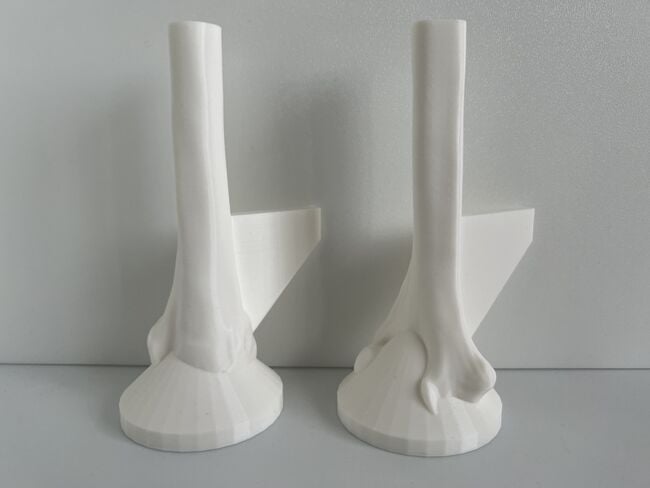
Confirm 3D Printing and Delivery Capabilities[edit | edit source]
Review the checklist to confirm you can properly 3D print and deliver our open-source bone models to the consignee and click on the checkboxes to check the most appropriate response.
| # | Checklist Item | Check the most appropriate response | Notes |
|---|---|---|---|
| 1 | 3D Printer Can Use G-Code Files Prepared Using Ultimaker Cura Or Cura Lulzbot Slicing Programs |
Yes No |
If your 3D printer cannot print g-code files created using Ultimaker Cura or Cura Lulzbot Edition, you will not be able to input the custom print setting options and the bone models will not print properly and will not display the required visual, tactile, and acoustic fidelity for orthopedic surgical simulation training. |
| 2 | 3D Printer Has A Build Volume Z Height Of At Least 150 mm |
Yes No |
*The average maximum length of the left tibial bone from a Nigerian population is 40.80 ± 3.91 cm (mean ± standard deviation) with minimum and maximum values of 34.60 cm to 56.0 cm.[1] *Our Team Lead recommends scaling each Adult Humeral Bone Model to no smaller than 18.0 cm (180 mm) for a total tibial bone length of 36.0 cm (360 mm). Therefore, a fused filament fabrication 3D printer that has a maximum build volume Z height of ~170 mm or more can be used to manufacture the 3D Printed Adult Male Tibial Bone Models. |
| 3 | Can Obtain Brand New White Polylactic Acid (PLA) Filament In Sealed Package |
Yes No |
Using fresh PLA filament just out of its original packaging optimizes print quality and minimizes the risk of mechanical failure during orthopedic surgical simulation training.[2] |
| 4 | Can Arrange Delivery Of 3D Printed Adult Male Tibial Bone Models To Address of Consignee Or Pick-up 3D Printed Adult Male Tibial Bone Models By Consignee |
Yes No |
We have compiled a partial list of local and international shipping organizations that could deliver the models:
|
All checklist items must be checked as "Yes" in order to proceed with clicking on the "Next" button in the Menu box located in the upper right section of this page.
Acknowledgements[edit | edit source]
This work is funded by a grant from the Intuitive Foundation. Any research, findings, conclusions, or recommendations expressed in this work are those of the author(s), and not of the Intuitive Foundation.
References[edit | edit source]
- ↑ Ugochukwu EG, Ugbem LP, Ijomone OM, Ebi OT. Estimation of Maximum Tibia Length from its Measured Anthropometric Parameters in a Nigerian Population. J Forensic Sci Med [serial online] 2016 [cited 2021 Jun 27];2:222-8. Available from: https://www.jfsmonline.com/text.asp?2016/2/4/222/197928.
- ↑ https://support.ultimaker.com/hc/en-us/articles/360012101319-How-to-store-material
- ↑ https://www.riders.org/
- ↑ Riders for Health. Medical supply chain logistics. [Internet]. Olney (MD): Riders for Health II; 2021 [cited 2021 Aug 17]. Available from: https://www.riders.org/how-we-work/services/distribution-of-pharmaceuticals-and-medical-supplies/.
- ↑ https://www.dhl.com/
- ↑ https://www.bollore-logistics.com/
- ↑ https://www.fedex.com/
